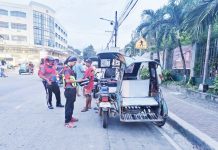[av_one_full first min_height=” vertical_alignment=” space=” custom_margin=” margin=’0px’ padding=’0px’ border=” border_color=” radius=’0px’ background_color=” src=” background_position=’top left’ background_repeat=’no-repeat’ animation=”]
[av_heading heading=’FAITH, HOPE & CHARITY | Connected cities’ tag=’h3′ style=’blockquote modern-quote’ size=” subheading_active=’subheading_below’ subheading_size=’15’ padding=’10’ color=” custom_font=”]
BY IKE SEÑERES
[/av_heading]
[av_textblock size=” font_color=’custom’ color=”]
Tuesday, April 4, 2017
[/av_textblock]
[av_textblock size=” font_color=” color=”]
IT SEEMS that the term “connected cities” has a double meaning.
First, it could mean cities that are connected within its own boundaries.
Second, it could mean two or more cities that are connected to each other, perhaps wirelessly, and not necessarily physically.
As see it, both meanings would have its own value, depending on what vantage point is applicable. For purposes of this article however, I would prefer to discuss the first meaning, in the context of connectivity within. In that context however, there is also a double meaning. First, it could mean the wired or wireless connections within a city.
Second, however, it could mean the sensors and applications within a city that would enable it to maintain an “Internet of Things” (IOT) infrastructure, otherwise known as a “Machine to Machine” (M2M) infrastructure.
I have always said that a city could not be smart if it is not green, and it is not enough for a city to be green, because a city has to be smart as well. If it has to be smart, then it also has to be mobile and agile, otherwise it could not even be considered as intelligent.
It goes without saying that for a city to be smart, it also has to be fully connected, not only via internet and mobile, but also via other non-commercial means of connectivity, including television white space (TVWS) and all kinds of radio frequencies (RF). As a matter of fact, many of us have already disregarded RF, forgetting that it is still the technology that supports the supposedly modern means of connectivity such as General Packet Radio Service (GPRS) and Long Term Evolution (LTE).
I have “invented” SIGMAS as a pneumonic device that could help us remember the characteristics of a smart city. It stands for Safe, Intelligent, Green, Mobile, Agile and Sustainable. It is only proper that “Sustainable” should be included, because there is no use of having all the other characteristics in place, if these are not sustainable.
As a matter of fact, sustainability is now the global criterion for all development plans and programs, as evidenced by the adoption of the seventeen Sustainable Development Goals (SDGs). A careful scrutiny of these goals would tell us that SIGMAS is written all over the place, not only in terms of connectivity, but also in terms of overall sustainability.
In theory, it could be said that the architecture of connectivity within a city could be like that of the internet, being a “network of networks”. That may be so if the city could host a citywide intranet, but that may just be practical for emergency purposes, and not for day to day use. The more practical approach of course is for the entire city to be connected to the internet, via any available means.
In this connection, it is good to note that the national government already has a program to deploy wireless fidelity (WIFI) signals in public places. Good as it already is, it would be better if the local governments could also supplement these signals with their own.
It may still take a long time before most cities could become fully automated, but it would be good if the richer cities could already start preparing their own Information Systems Strategic Plans (ISSPs) that by now should outline what they plan to do with Big Data, Internet of Things (IOT), data analytics and cloud computing. Although it is not mandatory on their part, the local governments should voluntarily prepare their own ISSPs because it is for their own good. Better still, these local governments should incorporate their ISSP with their own Comprehensive Development Plan (CDP), yet another compulsory requirement that they should submit.
Under normal circumstances, it may be practical to discuss the preparation of the ISSPs in the agenda of the Municipal Development Council (MDC) but whenever or wherever it is possible, it would be better to organize a separate Municipal Information and Communications Technology Council (MICTC) that would focus exclusively on local information and communications technology (ICT) concerns.
Among other agenda items, the proposed MICTC could possibly address emerging issues such as the conversion of existing Closed Circuit Television (CCTV) cameras from analog to digital, the integration of traffic lights synchronization into one central server and the installation of IOT sensors all over the city for various purposes.
For practical reasons, the CDPs should be prepared using Geographic Information Systems (GIS) as the foundation. As a matter of fact, GIS should also be the foundation of the Comprehensive Land Use Plans (CLUPs). Moreover, GIS should also be the foundation for tax mapping and hazard mapping, among other practical purposes.
If and when IOT sensors are installed, their locations should also be pinpointed as part of GIS data. In a manner of speaking, it could be said that cities could not really be considered as connected, not unless IOT is in place within their boundaries. Needless to say, IOT sensors could also be used for Climate Change Adaptation (CCA) and Disaster Risk Reduction (DRR). (iseneres@yahoo.com/PN)
[/av_textblock]
[/av_one_full]







